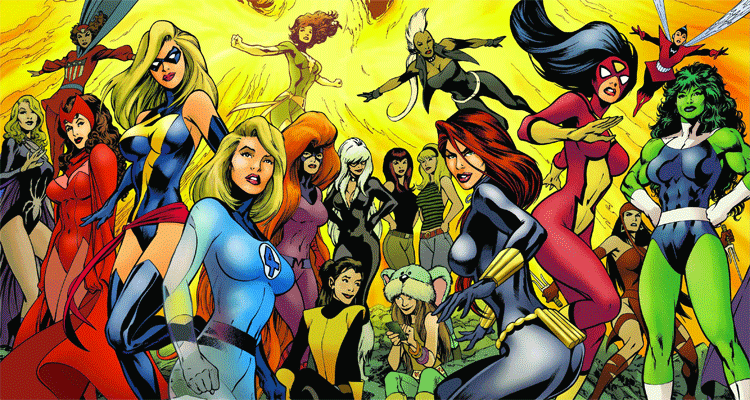Women in Comics and in Superhero Films: Why Everyone Should Know About the Hawkeye Initiative

“Nowadays I’m really cranky about comics. Because most of them are just really, really poorly written soft-core. And I miss good old storytelling… And all the girls are wearing nothing, and they all look like they have implants. Well, I sound like a very old man, and a cranky one, but it’s true.” ― Joss Whedon
When I began reading comics in the 1980s, artists like Rob Liefeld, Todd McFarlane, and Jim Lee were at the height of their powers, creating the kind of interest in comic books that launched a thousand superhero movies in the decades to follow.
Spider-Man, my favorite hero, was super not because of some radioactive bite. His powers came from the iron resolve forged by his love of Mary Jane Parker and Aunt May. When the X-Men came back from the dead (again!) they came under the leadership of Storm.
It’s enough to make anyone think, “You’ve come a long way, baby!” But not so fast, true believer.
In my high school art class, my teacher rolled her eyes when I argued that cartooning was a valid art form. “Look at the line variation and perspective,” I said. My teacher who knew Jim Lee from art school just said, “He likes to draw boobs.” I was heartbroken. Why can’t she see what I see? I thought.
The reverse was truer. The only X-Men endowed with anything resembling a normal woman’s figure was Jubilee, a teenager. Mary Jane, as illustrated by McFarlane, wore tiny shirts and miniskirts. Every other woman was a carbon copy of this Barbified template: D-cup breasts, pencil-thin waist, wide hips, impossibly long legs. But, hey, words can only say so much, so feel free to Google Liefeld’s work and see for yourself.
Worse, unlike the male heroes’ powerful action poses, the women were almost always pictured with their butt out or legs spread or boobs pushed forward. They would come out of showers where the steam drifted over just the right places to get approval from the Comics Code. These were women who looked more ready for a pillow fight than saving the world.
Not to mention the “Women in Refrigerators” trope, when female characters are abused, depowered, or raped and only serve as motivation for a male character to seek revenge.
In effect, boys who read this received completely wrong, potentially destructive messages about female and male gender roles and body image at an age when they are searching for answers to those very questions. The movies, even Joss Whedon’s Avengers, were not much better, truth be told. The main movie poster is the Avengers in battle-ready stances, except Black Widow. Her individual poster is the only one that is rear-facing. Oh, and if you want more evidence, check out this update with Catwoman from “The Dark Knight Rises.”
Avengers Disassemble!
Don’t get me wrong here. Women can take ownership of their bodies, costumes, and gender roles, thereby owning their sexuality. Cosplayers of all shapes, sizes, and genders have done this to great effect, showing that you can both be the Catwoman in tight, black leather…and fabulous.
Increasingly, women have become the writers and artists who create the superheroes and undercut these clichés. For more on this, check out “Hark! A Vagrant” at http://harkavagrant.com/index.php?id=311. It’s a slow change in this once all-boys club, but when you learn the rules—like the Matrix—you can bend or break them.
And so that’s where the Hawkeye Initiative comes in. It was created in response to artist Noelle Stevenson, AKA “Gingerhaze”, who suggested the way to fix every “Strong Female Character pose” in superhero comics was replace the character with Hawkeye doing the same thing. It’s playful and humorous, but undeniably effective.
For the casual superhero fan, this site is gender identity 101 (with superheroes. When you hear, “That’s so not true!” send that person to the site and let them scroll down the endless examples.
To bring this full circle, the Hawkeye Initiative is the very website I wish had existed when I had picked up my umpteenth X-comic and wondered by Psylocke as Lady Mandarin (drawn by Lee) was dressed and posed more for the beach than for the battle. I still read those comics today…just with a mixture of fascination and angst. I have come a long way in my learning. I admit there is still a long road ahead yet.
Geek culture has grown to be a big tent. We’re all here to celebrate the things we love. Remember that the people behind the costumes are still people. And the women behind the masks and inside the comics may represent larger than life characters, but so, too, do they represent something else. They are your sisters, mothers, and daughters. They deserve better. We all do.





